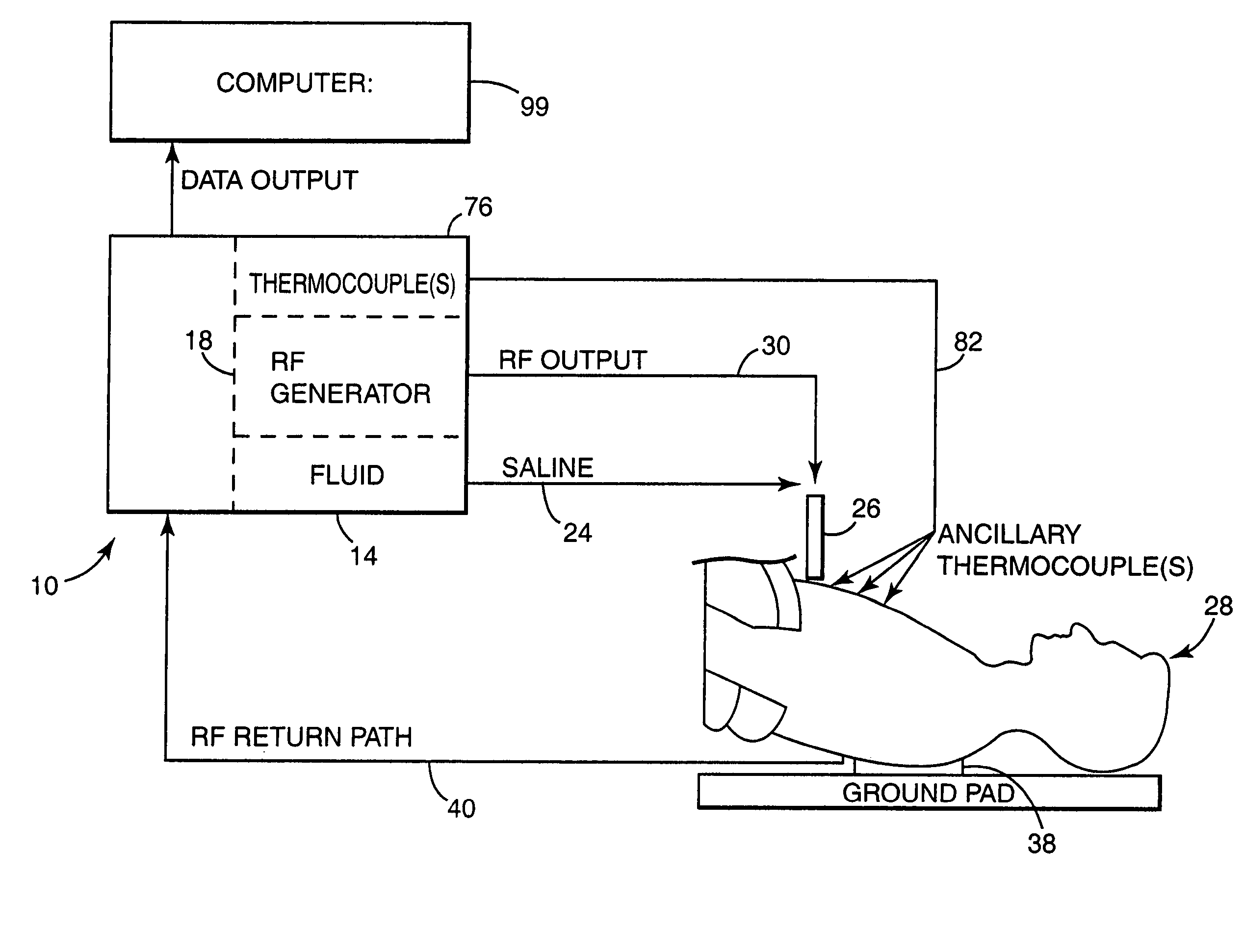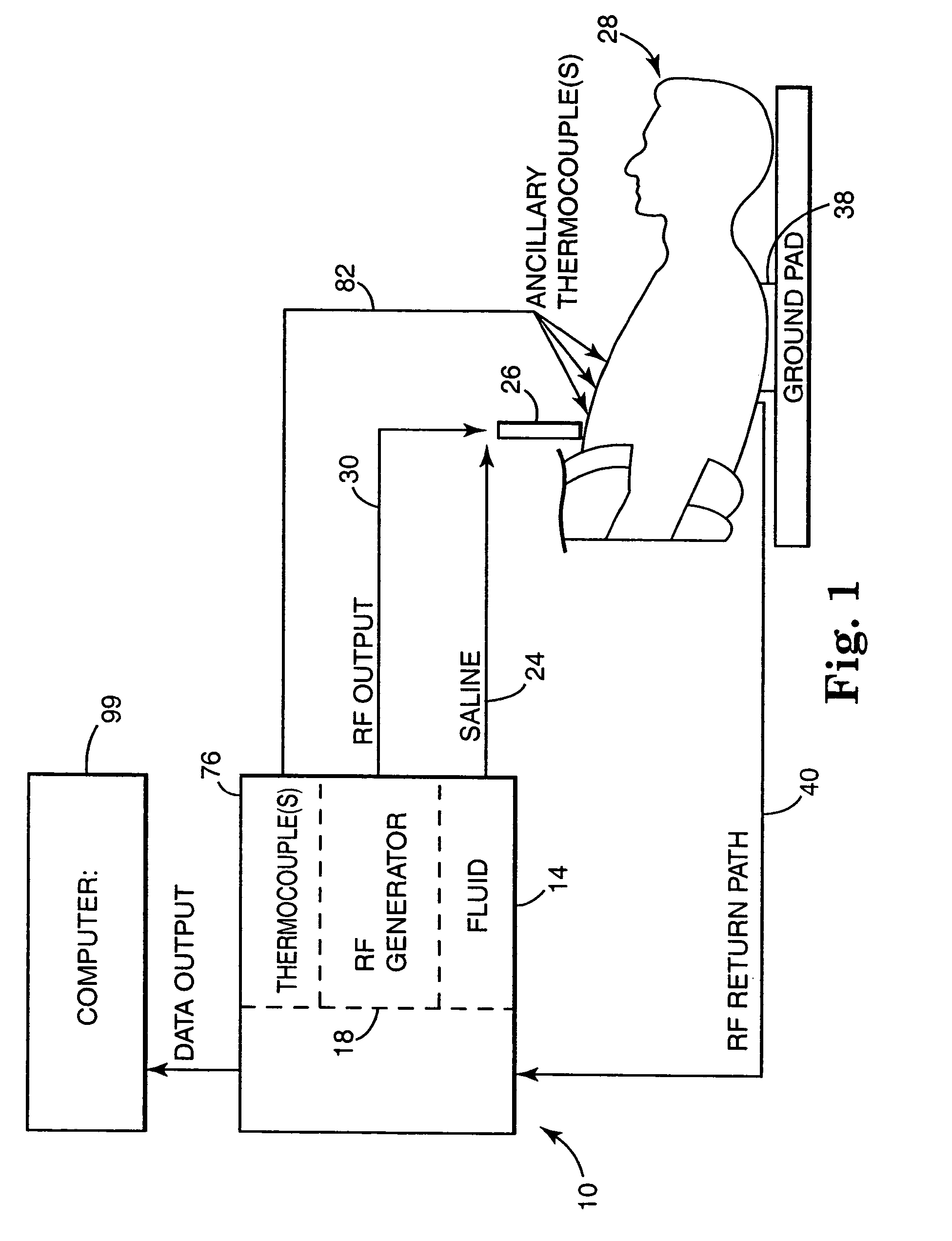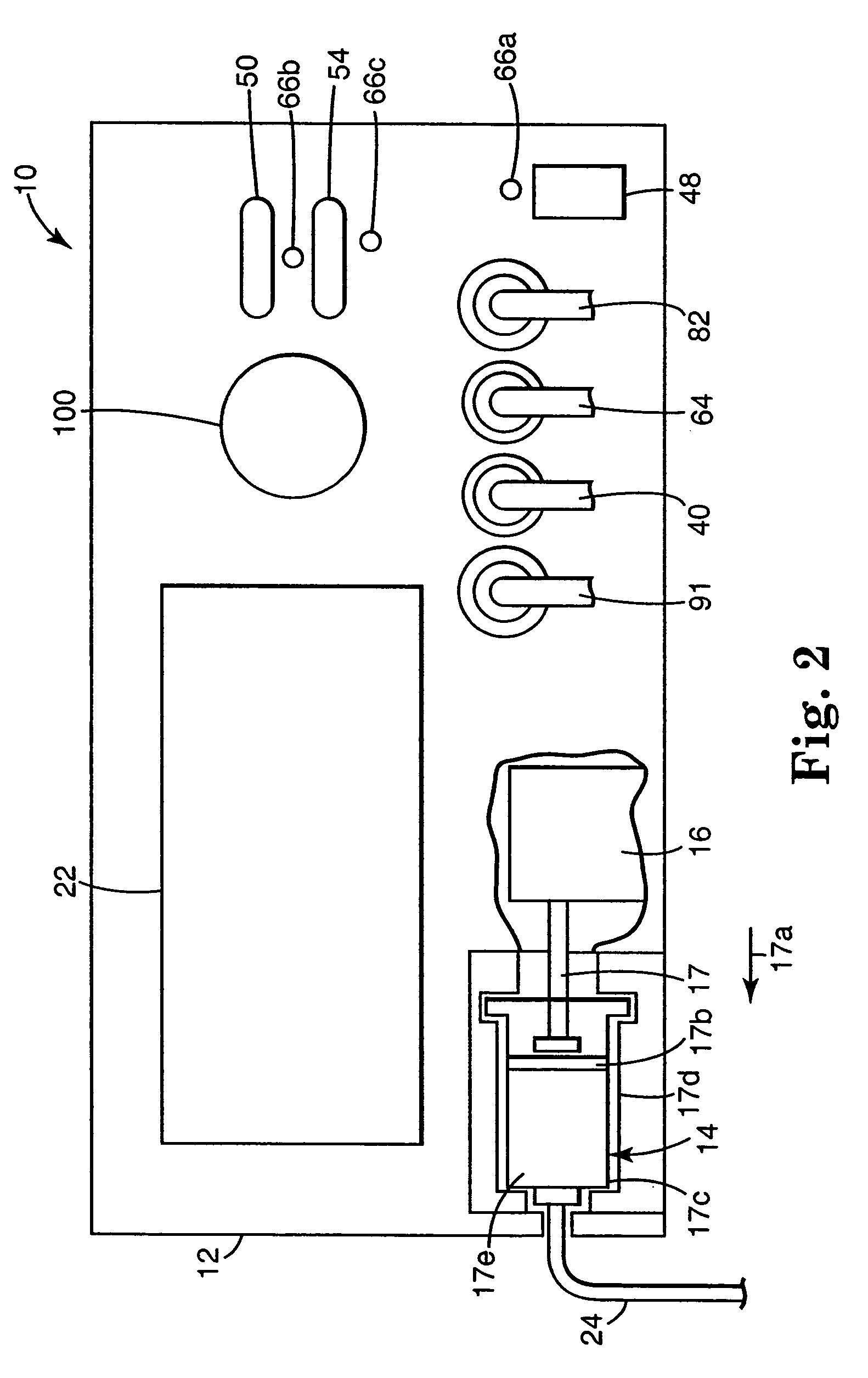Apparatus and method for creating, maintaining, and controlling a virtual electrode used for the ablation of tissue
a virtual electrode and electrode technology, applied in the field of apparatus and method of creating a virtual electrode, can solve the problems of local shrinkage and an opening in the tissue, irregular heart beating, and dried blood cells, and achieve the effects of reducing the likelihood of increasing the tissue temperature of the ablation site, increasing the impedance of this surrounding tissue, and reducing the likelihood of unwanted heating of this surrounding tissu
- Summary
- Abstract
- Description
- Claims
- Application Information
AI Technical Summary
Benefits of technology
Problems solved by technology
Method used
Image
Examples
Embodiment Construction
[0058]Referring now to FIGS. 1-4, a Virtual Electrode Thermal Ablation Device (VETAD) 10 in accord with the present invention will be described. VETAD 10 comprises a housing 12 for receiving a conductive fluid supply 14, a generator 18 for generating radio frequency current, a microprocessor 20 for, among other features, substantially simultaneously controlling the flow rate of fluid 14 supplied by pump 16 and the power supplied by generator 18, and a display / control panel 22.
[0059]Conductive fluid is transferred from supply 14 via a fluid line 24 to a surgical instrument 26 and then to a patient 28. A pump 16, which is preferably a syringe-type pump of the kind presently manufactured by Kloehn Corporation, may be used to assist in the transfer of conductive fluid from the fluid supply to the patient. A syringe-type pump generally includes a piston 17 that will extend in the direction of the arrow 17a to engage the syringe plunger 17b of a syringe 17c holding the conductive fluid to...
PUM
 Login to View More
Login to View More Abstract
Description
Claims
Application Information
 Login to View More
Login to View More - R&D
- Intellectual Property
- Life Sciences
- Materials
- Tech Scout
- Unparalleled Data Quality
- Higher Quality Content
- 60% Fewer Hallucinations
Browse by: Latest US Patents, China's latest patents, Technical Efficacy Thesaurus, Application Domain, Technology Topic, Popular Technical Reports.
© 2025 PatSnap. All rights reserved.Legal|Privacy policy|Modern Slavery Act Transparency Statement|Sitemap|About US| Contact US: help@patsnap.com



